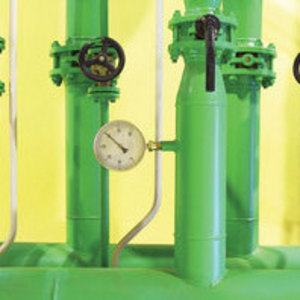Natural gas price trends encouraging for the consumer

January 2, 2015
BY Ben Straus, U.S. Energy Services
For the near term the natural gas market is on a trajectory to remain inexpensive compared to historical benchmarks. Domestic dry gas production stair-stepped its way to new output records month after month in 2014, easing concerns about inventory levels and quietly raising questions about the sustainability of prices above $4 for 2015. Weak demand to start the winter was sufficient to start prices tumbling by mid-December. However, despite the bearish picture for the start of the New Year, crumbling oil prices suggest serious headwinds for ongoing supply growth perhaps as early as the second half of 2015. The upcoming year is looking encouraging for the consumer of natural gas but the assessment is not an unqualified positive.
In the short run, it’s hard to imagine a better scenario for the end-user of natural gas. Market analysts are starting to mention the parallels to 2012 when production threatened to test inventory capacity. This time round the picture looks pretty similar. Following (relatively) low production growth from 2012 to 2013, the last twelve months have set progressively higher record rates of production, and the growth unleashed at the tail end of the year has been eye-opening with the average production rate jumping 3.2 percent from November to December. That would equate to an annualized growth rate of 39 percent. At this point, the missing piece that would complete the analogy to 2012 would be a very moderate first quarter with warmer than normal temperatures suppressing residential and commercial demand. Cold risks remain, but higher production virtually forecloses on the possibility of a repeat of last year’s decade-low inventory levels.
While supply growth is putting downward pressure on prices in the short term, there is a dark cloud lurking on the horizon. One of the key factors driving the fantastic gains in U.S. natural gas production has been the colocation of natural gas with other hydrocarbons that are priced based on the value of crude. Producers drill for crude and gas is produced in association with the targeted resource. With West Texas Intermediate Crude prices tumbling from over $100/bbl to below $60/bbl, the incentive to drill for crude has taken a substantial hit, and the gas market can expect to feel the reverberations as associated gas production falls. Identifying the timing of the impact of lower crude prices on gas production is uncertain, but as supply growth slows, and demand catches back up, upward pressure on prices will return to the gas market.
Advertisement
Advertisement
Related Stories
The U.S. exported 35,953.6 metric tons biodiesel and biodiesel blends of B30 or greater, according to data released by the USDA Foreign Agricultural Service on Aug. 5. Biodiesel imports were at 2,148.9 metric tons for the month.
The European Commission on July 18 announced its investigation into biodiesel imports from China is now complete and did not confirm the existence of fraud. The commission will take action, however, to address some systemic weaknesses it identified.
The U.S. exported 31,160.5 metric tons of biodiesel and biodiesel blends of B30 and greater in May, according to data released by the USDA Foreign Agricultural Service on July 3. Biodiesel imports were 2,226.2 metric tons for the month.
CARB on June 27 announced amendments to the state’s LCFS regulations will take effect beginning on July 1. The amended regulations were approved by the agency in November 2024, but implementation was delayed due to regulatory clarity issues.
Legislation introduced in the California Senate on June 23 aims to cap the price of Low Carbon Fuel Standard credits as part of a larger effort to overhaul the state’s fuel regulations and mitigate rising gas prices.
Upcoming Events








